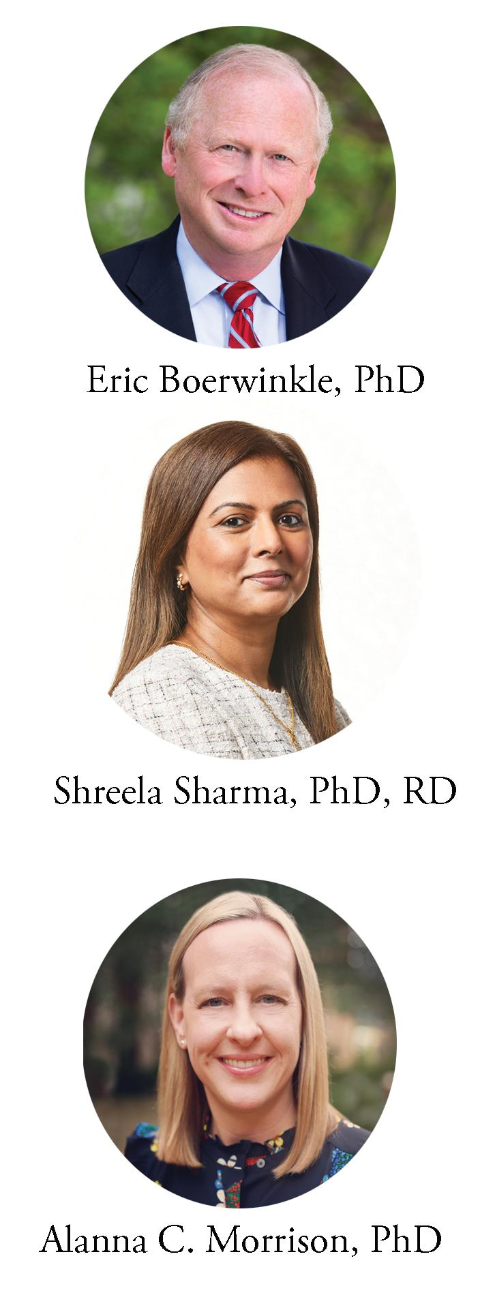People have always been afraid of the unknown—an evolutionary trait that most likely surfaced by keeping those who were more cautious safe. When the COVID-19 pandemic first surfaced, the scariest parts of the virus were the unknowns. Who was susceptible? Why would seemingly healthy individuals fall to bad outcomes? How was the virus spreading and when would it stop?
Primed to address crises like this, public health specialists leapt to the forefront. Leading efforts in Houston and advising city officials how best to respond is Eric Boerwinkle, PhD.
“UTHealth School of Public Health is in many ways ideally situated because we are like Switzerland,” Boerwinkle explains. “There are many hospitals and medical schools, but there is only one public health school in Houston. We have very good relationships with our partners in the Texas Medical Center and regional campuses throughout Texas, and we have a reputation for bringing people together.”
While experts from UTHealth School of Public Health initially helped provide data and projections for how the virus would impact communities, Boerwinkle quickly realized that the long-term consequences of the virus would reverberate in our communities for what is likely to be decades. This was the genesis of the COVID-19+ Cohort study, a collaborative effort with a primary goal of identifying predictors of bad and good outcomes, particularly modifiable predictors, and assessing the lingering damage from the virus.
"We are fortunate in Southeast Texas to have a functioning health information exchange,” explains Boerwinkle. A health information exchange is an infrastructure that enables health care providers to share patient information across health care systems to help improve patient care. Greater Houston Healthconnect is a regional health information exchange extensively covering Southeast Texas (approximately nine million individuals) with greater than 90% participation rates (including safety net hospitals and Federally Qualified Health Centers). “The health information exchange infrastructure was already in place as was the ability and approvals to conduct quality improvement and outcomes research within the context of the health information exchange, so when COVID-19 came along, we were able to leverage this to see the clinical side and the community side of the virus.”
In addition to Boerwinkle, genetic epidemiologist Alanna C. Morrison, PhD, and nutritionist Shreela Sharma, PhD, RD, are helping to build a more complete picture.
“Health disparity is at the center of COVID-19,” says Sharma, whose research focuses on social determinants of health, such as access to food, transportation, and housing. “The cohort allows us to drill deeper into the health disparity issues that our communities are facing.”
“It is not about a person’s skin color or language; rather, it is the circumstances of their life that is a major factor here,” adds Boerwinkle.
Students at the School of Public Health are behind the scenes as well, putting what they are learning into action and helping to interpret data in real time. “They are building skills to determine when something is time-sensitive and needs an immediate response—and to manage their own time,” says Sharma. “They have been incredible, providing that backbone and the resources to move this forward.”
The first phase of the study examined 8,864 records from a diverse group of patients who had COVID-19 throughout Texas. The next phase adds an additional 150,000 records of both adults and children. Faculty from UTHealth School of Biomedical Informatics are helping to interpret the vast amount of data, and experts in the Division of Infectious Diseases at McGovern Medical School at UTHealth help translate the findings into public health measures.
“On the national stage, there isn’t a better setting than Houston and the Texas Medical Center, where you can bring together so much data from so many health care systems with diversity in ethnicities, age, and socioeconomic status,” says Morrison. “The School of Public Health— and the university as a whole—is interdisciplinary by nature. It has been fantastic how people have worked together so well.”
Philanthropy has been a keystone to bringing this cohort study to fruition. Support from the John P. McGovern Foundation, The Elkins Foundation, The Cullen Trust for Health Care, and The Cullen Foundation helped fund critical hires and the technology to initiate the study.
“It is not melodramatic to say that we would not be where we are today with the cohort, if it were not for those four foundations stepping up early,” adds Boerwinkle.
Thanks to their support, we are developing a picture—perhaps the best picture—of what is really happening in our community and how that translates to what we are seeing in the hospitals.
"As we transition from a battle against the virus, we are entering a phase of trying to live with the virus,” says Boerwinkle. “I think that insight of the balance between the community and clinic will be incredibly important.”
And with that data, the unknown slowly becomes the known—and a little less scary.


